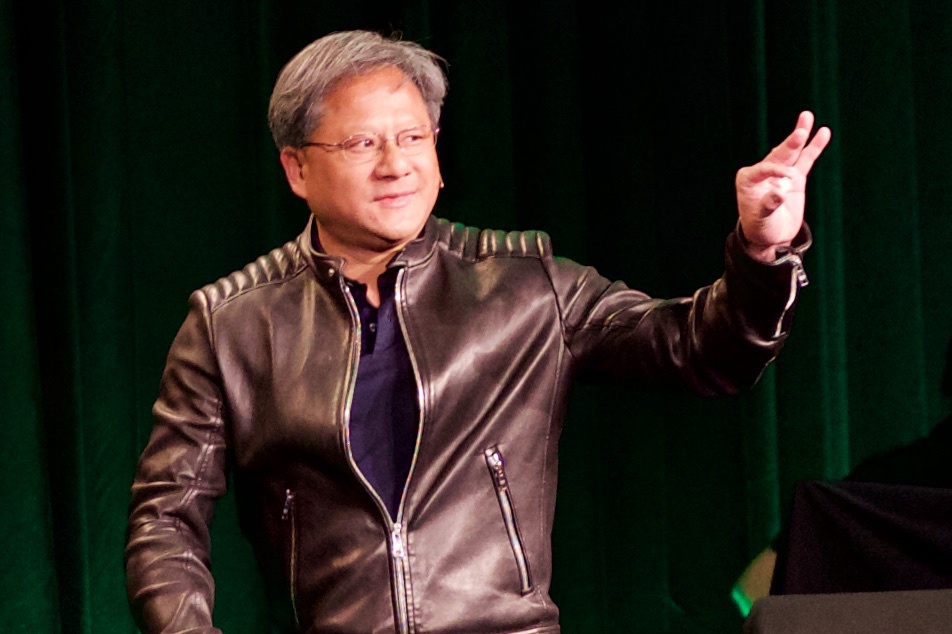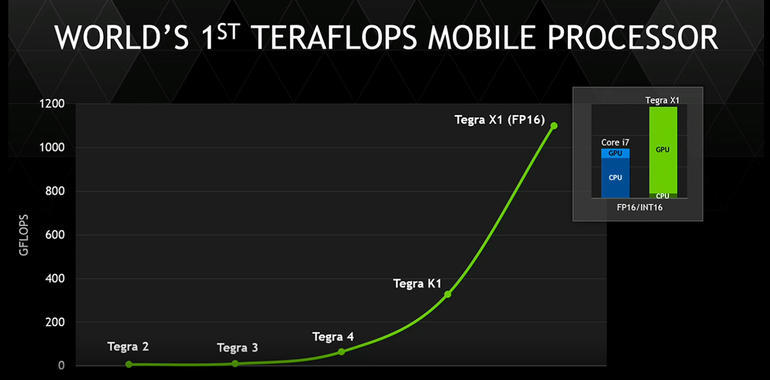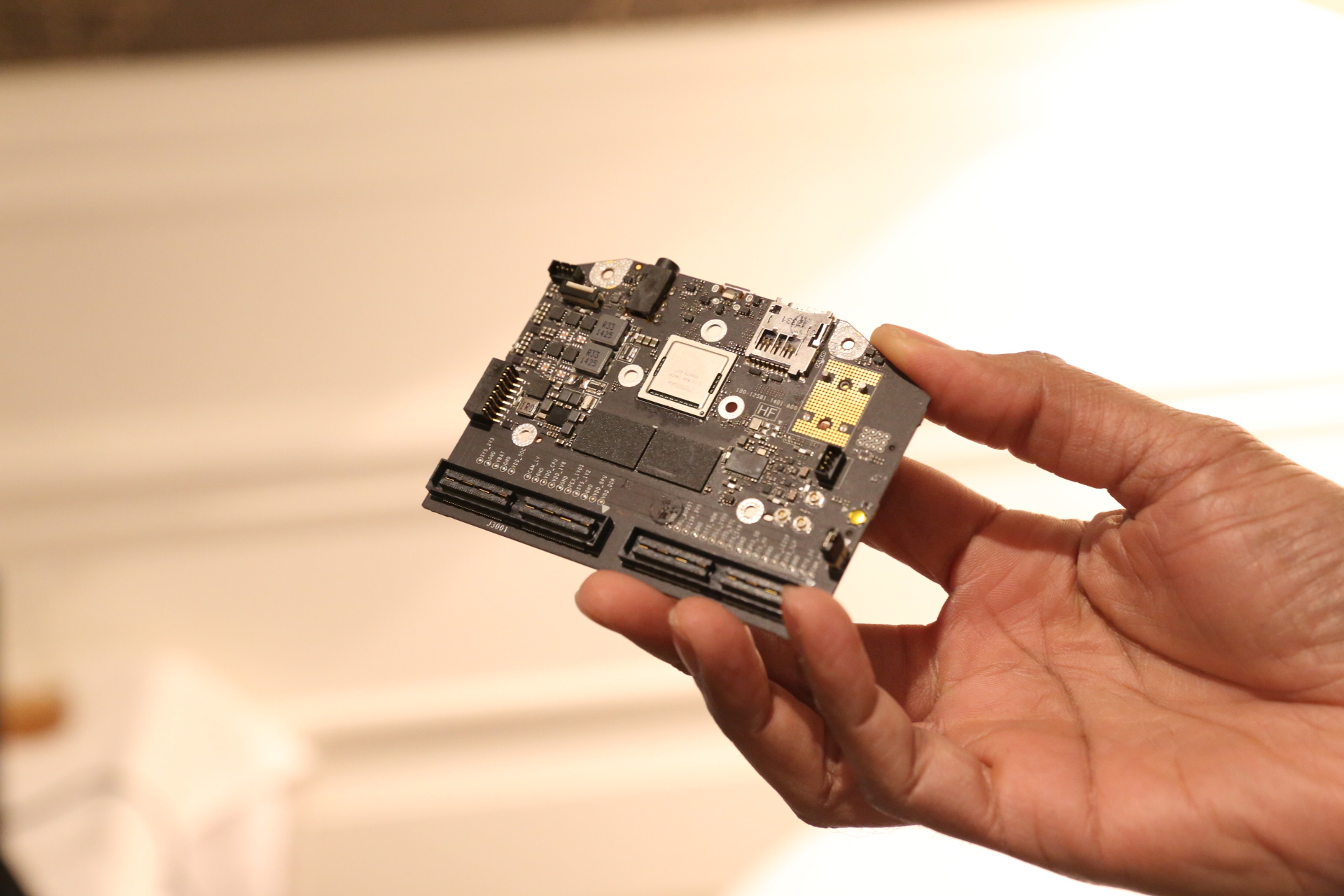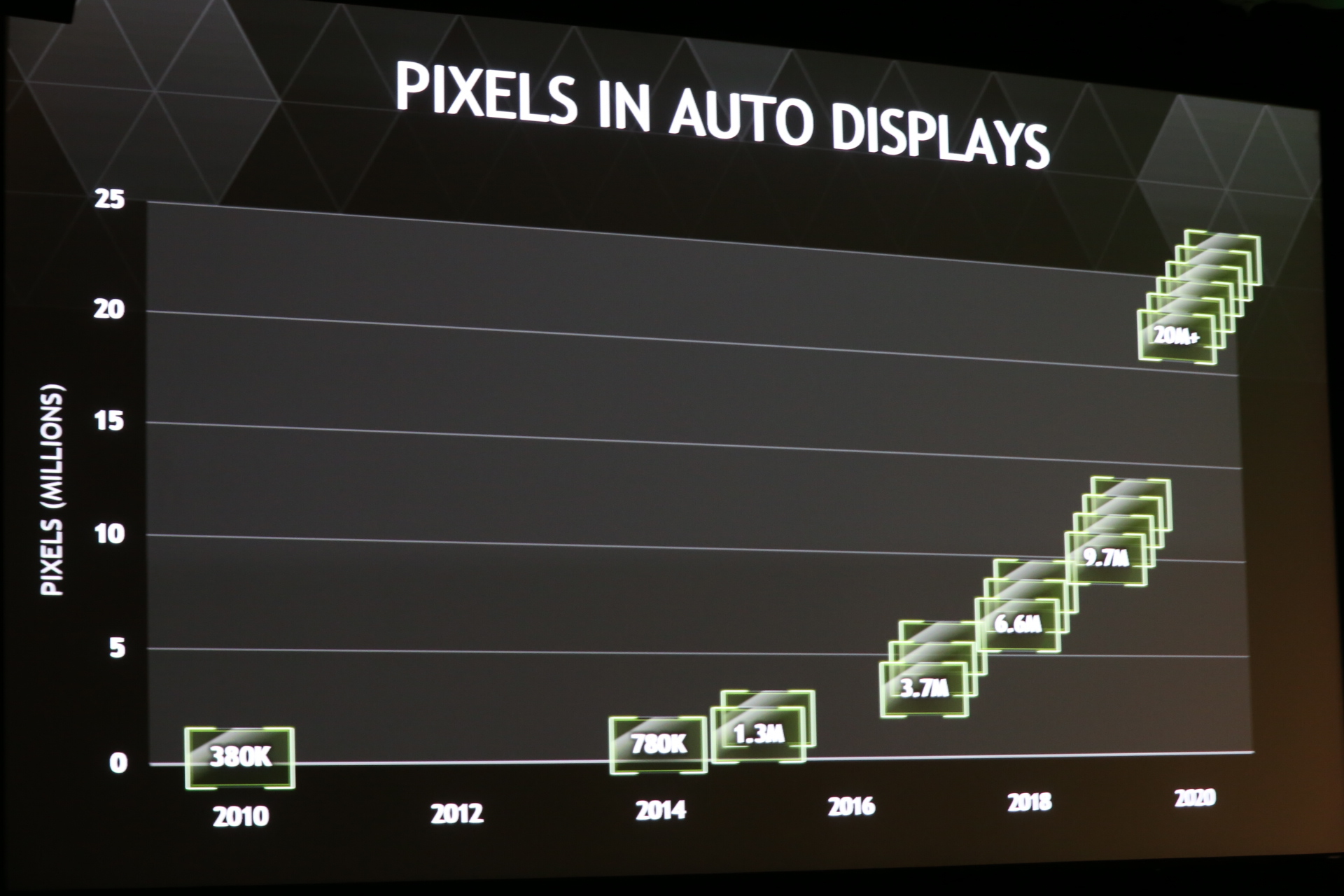nVidia showed off its new “mobile superchip”
Based on it, an autopilot platform for cars will be created.
 A few hours ago in the evening in Las Vegas at the zero-day press conference at the 2015 International Consumer Electronics Show, nVidia head Ren-Sun Juan came on the scene and spoke about a new mobile system-on-a-chip solution called Tegra X1.
A few hours ago in the evening in Las Vegas at the zero-day press conference at the 2015 International Consumer Electronics Show, nVidia head Ren-Sun Juan came on the scene and spoke about a new mobile system-on-a-chip solution called Tegra X1.The X1 is a logical continuation of the Tegra K1, in which for the first time for nVidia the unification of the architectures of mobile and desktop devices was carried out. The X1 is already being produced, probably soon tablets based on it will appear.
It may seem that this announcement will be of interest only to gamers using high-performance and expensive portable devices. But this is far from the case. Most of the conference was devoted to automotive systems.
Tegra x1
The most important thing for mobile devices is power consumption. And the technical characteristics of the X1 are impressive: the microcircuit is capable of providing 1.7–2 times more computing power than the A8X processor installed in the iPad Air 2. At the same time, approximately the same amount of energy is expended and the same technical process is used - 20 nm.
')
For a greater effect, nVidia-sheep even disassembled 8 pieces of the iPad Air 2 and measured the currents. They also lowered the frequencies of the X1 to the extent that the performance fell to the level of A8X. Apple tablet consumed 2.6 watts, X1 - one and a half.
The conference showed the work of the Elemental demo on the Unreal Engine 4, and the picture looked quite good for the tablet processor. It was stated that when rendering scenes, the X1 consumed only 10 watts.

nVidia is proud of the fact that the world's first mobile processor with more than teraflops has been produced. This figure is achieved using the 16-bit floating point format. 15 years ago, in 2000, only supercomputers (in particular, megawatt ASCI Red) had such performance, now this power fits in your pocket.
The chip contains 256 Maxwell GPU cores (just like in the GeForce 830M) and 8 64-bit ARM cores. In general, Maxwell is the architecture of video accelerators for desktop computers. That is why porting games to mobile devices can be easier.
A combination of A57 and A53 is used, four A53 cores will handle light tasks, four A57 cores are productive. Apparently, nVidia refused Denver architecture.
The power is enough to play 4K video at 60 frames per second, encoded with VP9 or H.265. This is a good start, even if the content of this resolution is not enough.
The performance of the X1 is approximately twice as high as its predecessor, the Tegra K1, and its benchmark BasemarkX 1.1 and 3Dmark 1.3 Icestorm Unlimited showed approximately one and a half times superiority. DirectX 11.2 and OpenGL 4.5 are supported, after the release of the API, support for DirectX 12 will appear.

| nVidia X1 | Google nexus 9 | Nvidia Shield Tablet | iPad Air 2 | |
|---|---|---|---|---|
| AndEBench-Pro | 12,401 | 12,047 | 10,363 | no data |
| 3DMark IS Unlimited | 43,769 | 24,256 | 30,970 | 21,659 |
| GFXBench 3.0 Manhattan Offscreen (frames per second) | 65 | 31 | 31 | 32.4 |
| CF-Bench | no data | 31,695 | 43,033 | no data |
Drive cx
Nvidia says there is too much power for tablets on the X1. Therefore, one of the first products, which will be a new processor, will be nVidia Drive CX. As the name suggests, this is the core of car infotainment systems. All major operating systems are supported - Android, QNX and Linux.

If you do not take exceptions in the form of Tesla , then today even in luxury cars there are screens with a relatively small resolution. Huang believes that in the coming years the situation will change.
Drive CX is specially designed for machines that have several active screens. Computing power is enough to display 16.6 megapixels. This is 8 FullHD or 2 4K screen.

The platform comes with Drive Studio software for dashboard simulation. The nVidia car device also aims to recognize speech and images.
While Google and Apple are only thinking about their Android Auto and CarPlay products, nVidia is working. Ricky Hoodie stepped on the scene, guiding the development of electronic components in Audi. He told how nVidia helped accelerate the development of technical tools: in a year, Audi achieved what was planned to be done in five.
Drive px
Finally, it was told about nVidia Drive PX, the car's autopilot computer. Apparently, this is not yet a platform for a completely unmanned vehicle, this is ADAS, a driver assistance system. But here, in general, the same tasks are solved: recognition of objects on the road and building a path.

In Drive PX, there are two Tegra X1 processors with a total capacity of 2.3 teraflops. The peak can handle 1.3 gigapixel. Up to 12 separate HD cameras can be connected to the platform for a full all-round view.
It is with the help of cameras that the model of the environment is built and analyzed. Nvidia believes that radar and sonar are gradually being abandoned in favor of computer vision technology.

The neural network recognizes other cars, pedestrians, cyclists, motorcyclists, signs and other information. Due to the fact that the conference was called "deep learning", the system can begin to react accordingly to buses with children, cars with flashing beacons or ambulances to those road users to whom the driver should pay attention.
All collected information is taken into account when automatically searching for the path and helps the driver to avoid collisions. Today, such systems are already used in expensive cars, but Juan hopes that Drive PX will significantly reduce the cost of technology.
According to the official press release of nVidia , ArsTechnica , Engadget ( 1 , 2 , 3 ), TechCrunch ( 1 , 2 ), Cnet , The Verge ( 1 , 2 ) and The Register .
Source: https://habr.com/ru/post/375245/
All Articles